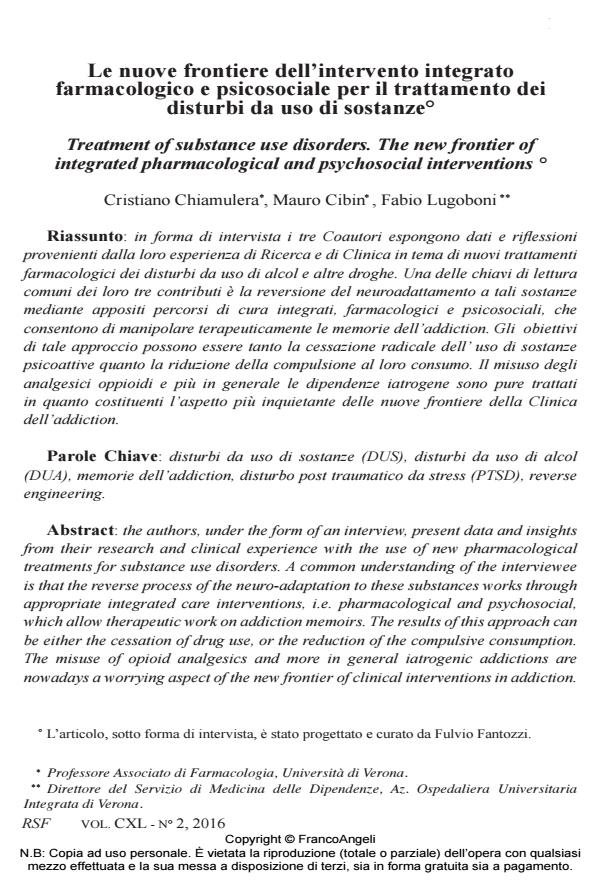Treatment of substance use disorders. The new frontier of integrated pharmacological and psychosocial interventions
Journal title RIVISTA SPERIMENTALE DI FRENIATRIA
Author/s Cristiano Chiamulera, Mauro Cibin, Fabio Lugoboni
Publishing Year 2016 Issue 2016/2
Language Italian Pages 23 P. 103-125 File size 223 KB
DOI 10.3280/RSF2016-002007
DOI is like a bar code for intellectual property: to have more infomation
click here
Below, you can see the article first page
If you want to buy this article in PDF format, you can do it, following the instructions to buy download credits

FrancoAngeli is member of Publishers International Linking Association, Inc (PILA), a not-for-profit association which run the CrossRef service enabling links to and from online scholarly content.
The authors, under the form of an interview, present data and insights from their research and clinical experience with the use of new pharmacological treatments for substance use disorders. A common understanding of the interviewee is that the reverse process of the neuro-adaptation to these substances works through appropriate integrated care interventions, i.e. pharmacological and psychosocial, which allow therapeutic work on addiction memoirs. The results of this approach can be either the cessation of drug use, or the reduction of the compulsive consumption. The misuse of opioid analgesics and more in general iatrogenic addictions are nowadays a worrying aspect of the new frontier of clinical interventions in addiction.
Keywords: Substance use disorders (SUD), alcohol use disorders (AUD), addiction memoirs, posttraumatic stress disorder (PTSD), reverse engineering
Cristiano Chiamulera, Mauro Cibin, Fabio Lugoboni, Le nuove frontiere dell’intervento integrato farmacologico e psicosociale per il trattamento dei disturbi da uso di sostanze in "RIVISTA SPERIMENTALE DI FRENIATRIA" 2/2016, pp 103-125, DOI: 10.3280/RSF2016-002007